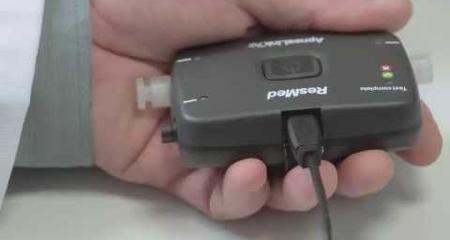Many individuals with OSA and snoring have narrowing of the airway in the lower throat that contributes to blockage during sleep. The cause of this blockage often varies, so multiple procedures have been developed to correct or reduce the blockage. Selecting the best procedure for any patient is based on many factors. No single procedure is best for all. The following procedures modify tissues of the lower pharynx when the involved tissues are obstructive or abnormal. They may be used in conjunction with other surgeries and treatment options.
Hyoid Myotomy
The hyoid bone is a small C-shaped bone in the upper neck above the Adam’s apple cartilage. Many muscles of the tongue and throat attach to the hyoid. Hyoid myotomy and suspension is a procedure to move this bone to increase the size of the lower airway. In the procedure, a small portion of the middle of the hyoid bone is exposed in the neck. To do this, two small bone anchored screws are placed in the back of the chin and several “tethers” are passed around the hyoid bone which is then pulled forward toward the lower jaw. This procedure may be done under local anesthesia as day surgery or may be combined with other surgeries.
Lingual Tonsillectomy
Enlargement of the lingual tonsils (at the base of the tongue) is a common contributor to airway obstruction in OSA. Removing lingual tonsils was markedly improved with the application of plasma surgical technology and endoscopic minimally invasive techniques. Many of these procedures were pioneered at the Froedtert & the Medical College of Wisconsin's Sleep Disorders Program.
Uvulopalatopharyngoplasty (UPPP)
Uvulopalatopharyngoplasty treats sleep disorders by correcting obstruction in the upper pharynx of the palate. The technique removes the uvula, a portion of the soft palate, the tonsils and redundant (excess) tissue from the throat. UPPP may be performed in conjunction with other treatments targeted at other areas of collapse.
Tracheotomy
Historically, tracheotomy was the only treatment for severe, life-threatening sleep apnea and breathing failure at night. Now, because of modern medical and surgical alternatives, it is rarely required.
A tracheotomy is a surgical “hole” from the skin of the neck to the windpipe below the voice box. A tracheotomy is done for people with severe obstructive sleep apnea and those who are not candidates for other therapies. Because the hole bypasses the throat, blockage does not occur during sleep. Tracheotomy is very successful in the treatment of apnea and its complications. Since the upper airway is open during wakefulness, after healing, the tracheotomy hole may be closed except during sleep.
Despite the benefits of tracheotomy, the psychosocial implications, risks of infection and other potential complications may make it unacceptable for many patients. In patients who accept a tracheotomy, there is a reduction in the incidents and mortality associated with sleep apnea.
Other Procedures
In rare or unusual situations, other tissues cause airway blockage in sleep apnea and snoring. For these, the surgeon may need to modify tissues surrounding the voicebox to successfully treat obstructive sleep apnea.


